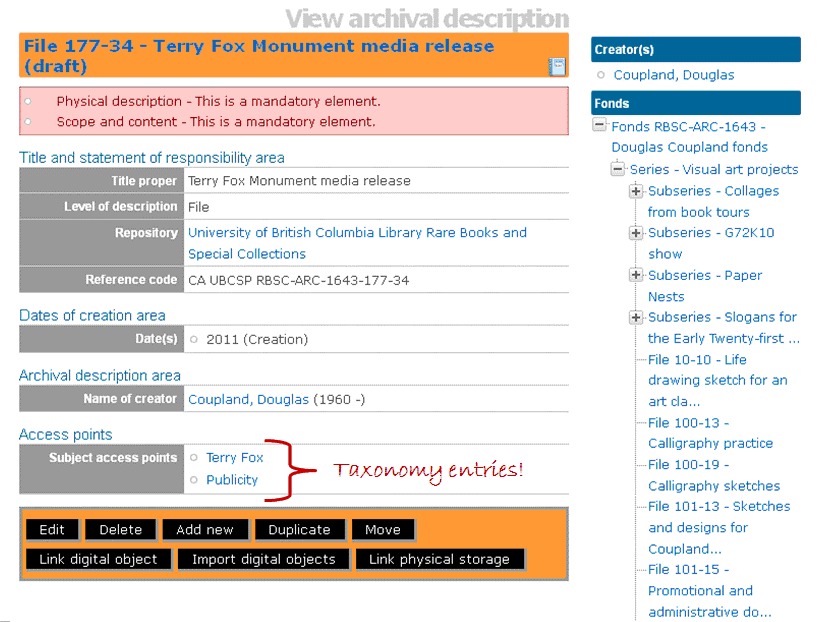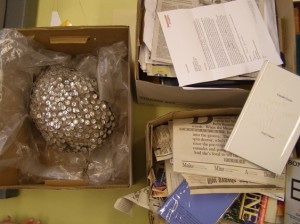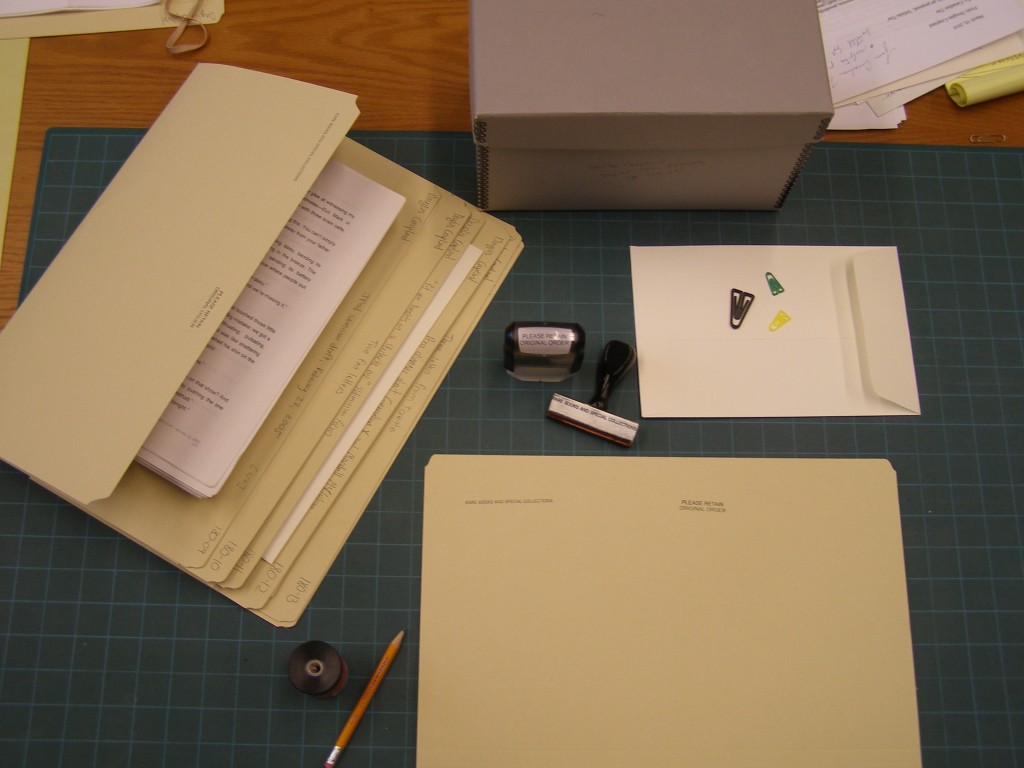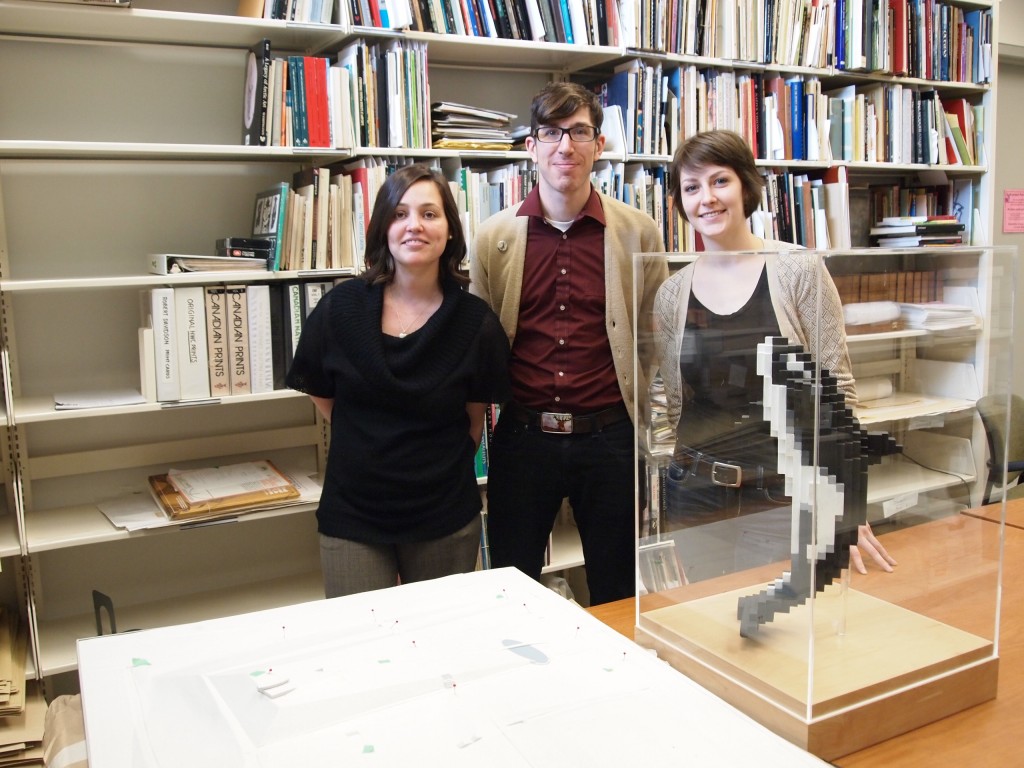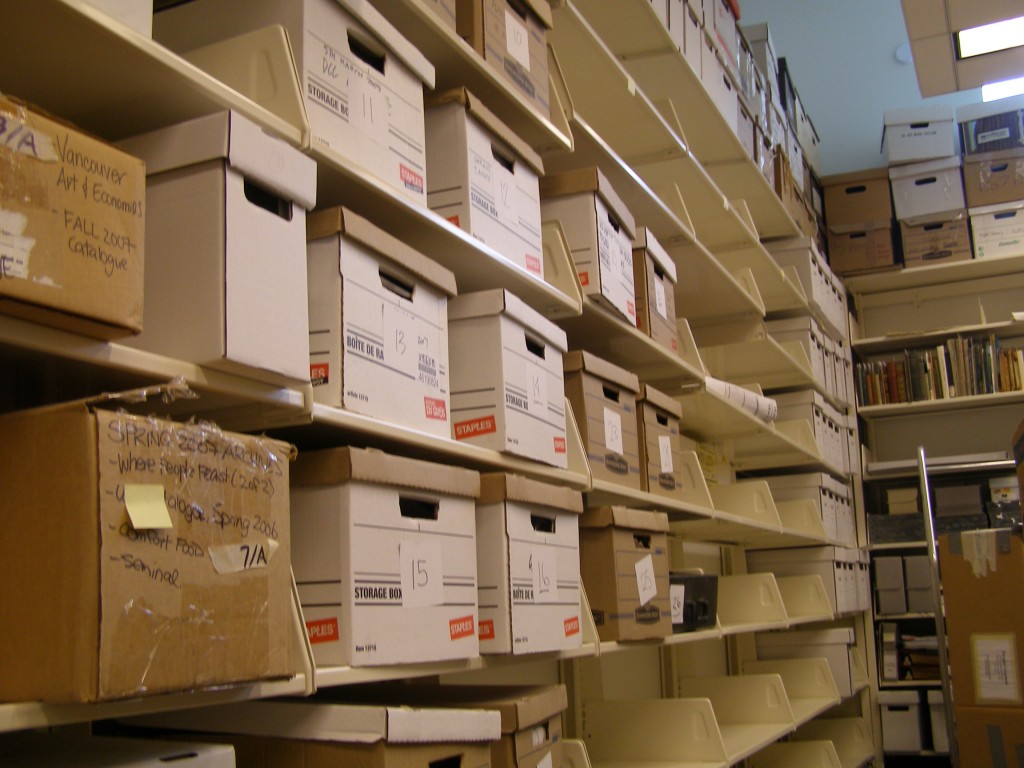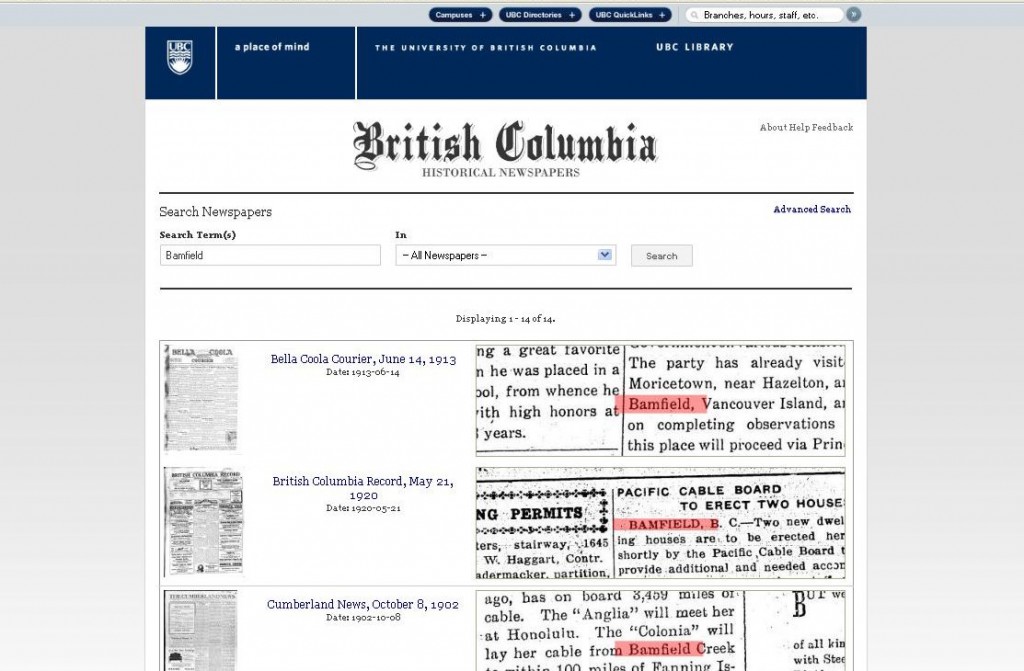Archivists note: This week our student archivists are going to explain how taxonomies, which is like “tagging” only slightly more sophisticated, is helping them draw out important connections in the Douglas Coupland fonds. It does make me reflect on how the technology we use to catalogue (or arrange and describe, in archives jargon) can affect both the process of arrangement and description, and how the information is displayed to our users. As our student archivists describe below, we at Rare Books and Special Collections are in the process of moving our finding aids into a database system called ICA-Atom. With more, our student team:
A word on taxonomies…
Taxono-what? Ok – so this is library and archives jargon, but if you’re familiar with tagging (who hasn’t tagged a photo on facebook or flickr?) the concept of taxonomies is the same – the only difference being that our “tags” can be organized hierarchically, with broader terms, narrower terms, and related terms. For example, the tag “JPod” could be a narrower term of “literary projects”, and could also have narrower terms to distinguish between the television adaptation script, the drafts, and the final manuscript.
Last post we talked about the challenges in organizing Coupland’s wide variety of materials into an order that maintains a link to how we received the materials, but also organizes them in a way that makes the fonds accessible and understandable to users. Since we have decided to process the materials in the order received, how then will researchers be able to see the relationships between items? Our solution: taxonomies!
Here at RBSC, we are also in the process of migrating our descriptions to a new platform called ICA-AtoM that allows for the use of tags and web-based navigation. ICA-AtoM is an open-source, web-based archival description software that is based on International Council on Archives (ICA) standards, freely available to users (and created by a graduate of UBC’s School of Library, Archival, and Information Studies!). In addition to a lot of other great features, ICA-AtoM also includes a taxonomy module, that will allow us to use a controlled vocabulary of tags when processing the newest Coupland materials.
So how will we go about doing this? First, we’ve created a subject list in ICA-AtoM based on the contents of Douglas Coupland’s material. For example, we have “tags” called Generation A and Girlfriend in a Coma that will be used for all files related to these two literary projects. Collage and Calligraphy are two more that will be used for materials related to some of Coupland’s visual art projects. Clicking on a taxonomy word within ICA-AtoM will reveal all other files related to the same subject. The taxonomy, then, is another avenue of access that patrons can use in addition to the finding aid/file list to find what they’re looking for. Because we are still in the process of figuring out all the projects and subjects covered in this accrual to the Coupland fonds, we are also creating tags “on the fly” as we work; once we’ve finished the initial process and are working on updating the series-level descriptions, we’ll also be managing the hierarchical relationships between the tags, so relationships between tags are maintained as well. This way, if a patron wants to see everything we’ve added about say, Coupland’s Firefighter’s Memorial in Ottawa, they can search the term “Firefighter Memorial” and all the related records will appear. Further, any of these records will have a tag-link included in the description to all the other related records, as well as listing any other related tags.
We’re excited to be implementing the first use of taxonomies here at RBSC, and we’ll be sure to update you on our progress as we carry on!

